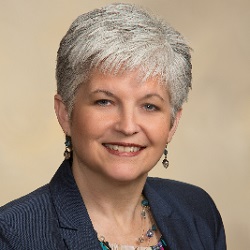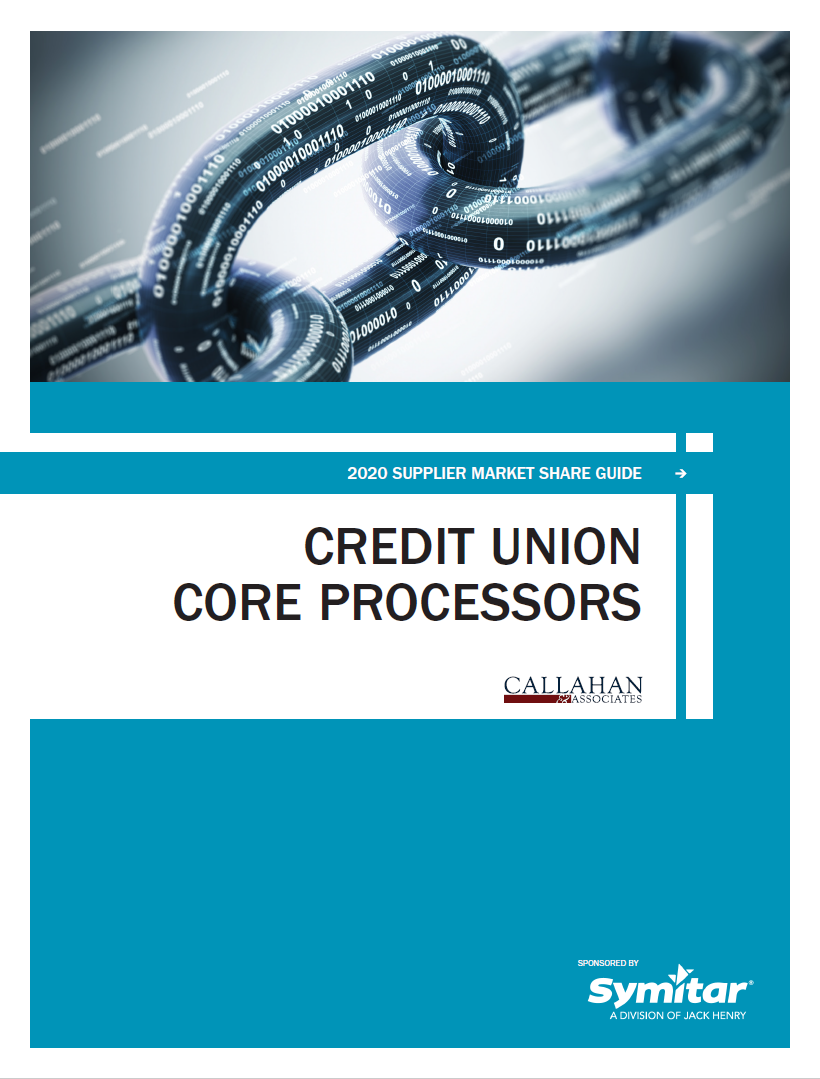There are few situations more fraught with peril or packed with possibilities for credit unions than a core conversion.
The data processing system is the hub of the wheel that makes the modern financial cooperative go ’round, and the conversion process can be bumpy. Then, when it’s over, credit unions must figure out how to harvest the potential of their new system.
But credit unions don’t have to go it alone. Vendors provide guidance during and after the conversion process, and consultants weigh in with expert opinion. Plus, credit unions themselves are happy to share best practices emerging from their own experience. Here are five.
No. 1: Lay The Groundwork And Communicate Often
Some best practices have become basic principles. For example, the CEO, senior management, and the board must buy into the conversion from the get-go if the project is to be more than just an IT venture. Another best practice is to take ownership.

Rick Long, Vice President of Information Technology Services, PSECU
I suggest electing a point person to manage the project and let the vendor know the credit union, not the core banking vendor, will manage the project, says Rick Long, vice president of information technology services at Pennsylvania State Employees Credit Union ($4.2B, Harrisburg, PA). After all, the credit union has to live with the system when the vendor completes the conversion.
According to Long, PSECU recognized early on that its conversion to the Corelation KeyStone platform in September 2018 would touch every operational area. So, the credit union clarified lines.
We brought in an outside consultant who helped sort through turf issues that came up to keep the project on track, says the 35-year IT veteran at PSECU.

Kris Goetzka, Vice President of Operations, Co-op Credit Union
In June 2017, Co-op Credit Union ($325.7M, Black River Falls, WI) went live on the Symitar Episys platform hosted through the Member Driven Technologies CUSO. According to Kris Goetzka, the credit union’s vice president of operations, every department had input into the selection process.
The credit union created teams for each area of responsibility to spread around work and pressure. It also offered additional training for subject matter experts.
Like other successful credit union conversions, Co-op relied on weekly meetings to identify and address issues, including those that came up on the demo system in place at Co-op months before the conversion became real.
Start the conversation early, Goetzka advises.

Jody Dabrowski, President/CEO, Illinois Educators Credit Union
Jody Dabrowski also stresses keeping all stakeholders informed before, during, and after a core conversion. She’s the CEO of Illinois Educators Credit Union ($58.2M, Springfield, IL), which converted to the Fiserv Portico platform in February 2018.
Illinois Educators sent its 7,200 members a two-page flyer detailing the timelines and expected benefits. PSECU, meanwhile, is providing post-conversion updates to its board for six months.
Langley Federal Credit Union ($2.6B, Newport News, VA) went live on the Symitar Episys platform in April 2018. The process involved more than 20,000 manhours and lots of back and forth communications.
Understand the member and staff impact of a core change and communicate as often as possible to both, says Deb Vollmer, senior vice president and chief experience officer at the credit union.
Best Practice:
Update stakeholders before, during, and after a core conversion. Co-op addressed issues during weekly meetings. Illinois Educators sent its members a two-page flyer with dates and benefits. PSECU is updating its board for six months post-conversion.
No. 2: Decide: In Or Out?

Deb Vollmer, Senior Vice President/Chief Experience Officer, Langley FCU
One of the first decisions a credit union must make is whether to run the system in-house or remotely. The latter is increasingly the popular option for credit unions of all sizes.
At our size, we can’t afford an IT staff that can support that, says Dabrowski at Illinois Educators, which is running Portico in a service bureau environment.
Premier America Credit Union ($2.5B, Chatsworth, CA) has resources and experience but also decided to go the remote route as it prepares to convert to the Symitar Episys platform next year.
It’s no longer a competitive advantage to run it inhouse, says president and CEO Rudy Pereira. Not doing that will allow us to redeploy resources to other much-needed value-building opportunities.
Whether a credit union opts for an in-house or remote system, it must be ready to conduct practice runs during the conversion.
Test, test, test, says Michael George, chief marketing, innovation, and advocacy officer at Kern Schools Federal Credit Union ($1.6B, Bakersfield, CA), a new user of the Symitar Episys platform as of April 2018. If it says test three times, test four. Get the naysayers involved. Have them try to break the systems. Learn from them.
Best Practice:
Test the system. Kern Schools FCU gets the naysayers involved. They try to break the systems and the credit union learns from them.
No. 3: Search For Efficiencies

Rudy Pereira, President and CEO, Premier America Credit Union
Laying the groundwork for success helped pave the way to it at PSECU, which began realizing benefits from its new core system from the day it launched.
Among those benefits is the ability to fail-over to its recovery site within a few minutes, CIO Long says. The credit union has also reduced end-of-day processing jobs from 300 to 13, eliminated memo posting for digital banking services, and replaced both the former imaging and reporting systems and custom digital image repository with a new document management system.
To achieve such success, Long says PSECU abided by a few principles, which included digitizing workflows wherever possible, retaining only what’s necessary while moving from one system to another, and minimizing customization by using the system as designed.
Langley FCU, too, is using its new system as designed. According to SVP Vollmer, the credit union has noted process improvement across the organization and has been able to shift its focus to interactions that drive greater value.

Michael George, Senior Vice President/Chief Marketing, Innovation Advocacy Officer, Kern Schools FCU
For example, the credit union is using Contact Event Manager, an Episys tool, to help develop and refine its member relationship management. The ability to relay information between branches and the back office is already showing in the improved ability to handle member service requests. Langley FCU is also using the OpCon solution interface to help automate daily and monthly processes as well as dealer reserve accounting and call reports.
All these improvements are on top of taking advantage of the ability of all new cores to more easily integrate with member-facing, third-party add-ons like mobile banking features.
Of that issue’s role in Premier America’s decision to convert, Pereira says, First and foremost is the ability to integrate third-party solutions. Our current vendor did not have market presence to motivate third parties to integrate into our core.
Best Practice:
Learn as much as possible about the new system’s capabilities. Langley FCU put the right folks in place to develop automation to drive new efficiencies.
No. 4: Reduce Recidivism
8 Pieces Of A Conversion Pie
Rudy Pereira is leading the way through the third core conversion of his career. The CEO at Premier America Credit Union ($2.5B, Chatsworth, CA) has plans to convert to the Symitar Episys platform in September 2019. Pereira has advice for credit unions as well as his own team as they journey forth.
- Don’t outsource: Hire a professional project manager if the credit union doesn’t have one, the credit union will need one during and after the conversion.
- Plan Ahead: Have a detailed project plan and own it. The conversion is the responsibility of the credit union.
- Communicate: Create lines of transparency so anyone at any time can raise red flags and concerns.
- Practice First: Stage at least two mock conversions and do not go live until major milestones are reached and completed.
- Communicate More: Overcommunicate to members.
- Clean House: Spend time cleaning up the credit union’s data.
- Stay Consistent: Do not change the organization’s automated transactional voice response system menu.
- Beef Up: Overstaff the call center and prepare reps during the mock conversions.
Recognizing that the new platform is just that new is critical to maximizing the system’s potential.
Establish a guiding principle that the organization is not trying to re-create the current core, Vollmer says. Every practice, process, and system is on the table and subject to change.
A core conversion is about creating the future, not replicating the past, says Long at PSECU. Ensuring that attitude is pervasive across the enterprise goes a long way toward preventing people from being prisoners of previous processes.
Hanging on to the old ways of doing things can put the kibosh on a lot of progress, so management needs to take the lead role in embracing change.
There’s a reason we’re converting, says Pereira at Premier America. It’s OK to give up how we did things before because we’re going to do things better. This is a message leadership has to frequently communicate.
That message sometimes is that there’s little choice in the matter.
The system we were using was so manual and outdated that there really isn’t an option for employees to go back to how they’ve always done it, says Goetzka at Co-op in Wisconsin. Employees have embraced the new system and are excited about the opportunities it provides.
Illinois Educators, meanwhile, incents employees to take advantage of the new system and share the knowledge by paying $10 for each process or procedure they create and submit to the Education Station, a procedures manual available on a shared drive. In the first eight months they have submitted approximately 100 items, including how to do a cashier’s check or order cash from a vault.
Vollmer at Langley says credit unions should record changes from the beginning. She recommends designating one person to capture all process improvements and operational changes as they occur.
All this will help prevent what Pereira at Premier America says could be a cartoonish outcome.
The biggest mistake I see is being dissatisfied with the current system, selecting a new system, then making the new system mirror the former system, he says. I call that a Far Side solution.
Best Practice:
Bring over only the data you need. PSECU removed more than 18 million redundant and obsolete records.
No. 5: Manage Expectations
Kern Schools FCU converted 11 systems, including its core platform, in 2011, prompted by changes needed to meet NCUA concerns. Then it converted again this year.
People have to understand that the conversion process is only halfway to two-thirds complete when you actually convert, says marketing, innovation, and advocacy officer George, who began his career with the California credit union as a part-time teller in 1994. You have to allow 18 to 24 months afterward to get things back in order.
Also important is setting clear expectations from the beginning.
A core conversion is the most complex project your organization will ever undertake, says Vollmer, the SVP at Langley FCU. Learn as much as possible about the system capabilities and put the right folks in place to develop the automation that will ultimately drive your efficiency.
Illinois Educators is doing just that when it comes to having the right people in place. The new Portico system dramatically expands the range of tasks a teller can do for members, so it brought aboard three new people as universal employees.
The credit union calls them member experience specialists. Tellers who could not or would not adapt and learn are now either part-time staffers handling simple transactions such as cashing checks, or they have moved on.
It was kind of touchy, but it’s what we had to do to give good service and stay competitive in our marketplace, CEO Dabrowski says.
Best Practice:
Everyone understands the go-live date is a major milestone, but Kern Schools FCU underscores that the actual process of conversion might only be half- to two-thirds done.
The 2020 Core Report
Callahan’s Supplier Market Share Guide: Credit Union Core Processors helps leaders fully understand the performance and strengths of core processors in the credit union space. This guide offers:
- Expert opinion and advice.
- Changes in market share.
- Client performance comparisons.
- Aggregate assets for credit union clients.
- Newly acquired clients and integration information for select platforms.
Learn how you can get access.

ContentMiddleAd
